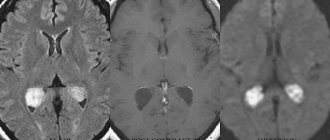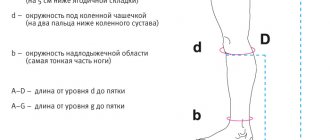Many women are interested in whether it is possible to hear the fetal heartbeat at home and from when. If a mother places her hand on her belly, she will not feel the baby’s heartbeat at any stage of pregnancy. Even if you feel a pulsation in the abdomen, you should not mistake it for fetal heartbeats. Most likely, this indicates that the pressure in the aorta is increased due to hormonal changes in the woman’s body due to pregnancy.
There are several ways to listen to the heartbeat of an unborn child, but this is difficult at home. As you know, heartbeats appear in the fifth week, but at this time an ultrasound will be required. You can hear the baby’s heartbeat at home at a later date, but without special equipment this is not easy to do. Fortunately, today it is not a problem to purchase such devices for home use.
You can learn more about fetal heartbeat from this article.
Auscultation
This is a physical diagnostic method that has been used for many years. This means listening to the fetal heartbeat. A stethoscope is used to perform auscultation. The instrument is applied to the belly of a pregnant woman lying on the couch.
Heartbeat is detected starting at 20 weeks. As the fetus grows, heart rhythms become clearer. During the examination, the specialist finds the point of best listening to tones. It determines the rhythm and nature of heart contractions. If the tones are clear and clean, everything is fine. Deafness of tones indicates the presence of intrauterine hypoxia.
Auscultation is a simple and accessible method. This is an advantage due to which this method of listening to the fetal heartbeat is used to this day. But it also has a significant drawback: difficulty in localizing sounds.
When is it necessary to calculate fetal heart rate at home?
There are situations when it is necessary to monitor the contractions of the unborn child’s heart every day.
- For bloody discharge at any stage of gestation. The most common cause of this phenomenon is placental abruption. Strict fetal monitoring is usually necessary throughout pregnancy.
- The uterus has increased tone. In such a situation, the blood vessels of the placenta are compressed, and this can lead to impaired blood circulation in it, while the fetus does not receive sufficient oxygen and nutrition.
- If there is a threat of miscarriage, you need to constantly monitor the fetal heartbeat at home in order to seek medical help in time.
- For anemia in a pregnant woman. In this case, the mother usually has low hemoglobin, which means that the fetus does not receive the required amount of nutrients that are carried by the blood.
- In case of illness of the expectant mother, which can cause a deficiency of oxygen and nutrients.
Dopplerography
This is a type of ultrasound examination. With its help, the state of the child’s cardiac activity is determined and the patency of the umbilical cord vessels is assessed. This diagnostic method gives significant results. A qualified specialist determines the presence of hypoxia, detects entanglement of the fetus with the umbilical cord and identifies abnormalities in the functioning of the placenta.
No preliminary preparation is required to conduct the study. Most ultrasound machines are equipped with a Doppler function. The procedure is absolutely painless. It lasts 15 minutes. The study is prescribed to women in the third semester of pregnancy.
The accuracy of detecting disorders using Doppler sonography is 70%. The absence of problems in a specific period of time does not exclude the development of complications in later stages.
Types of bradycardia in the fetus
Based on the nature and intensity of the decrease in heart rate in the fetus, the following types of pathology are distinguished:
- Basal – diagnosed when the embryo’s heart rate decreases to less than 120 times per minute; with timely help, harm to the child and the mother herself can be avoided;
- Decelerant - such bradycardia is diagnosed if the fetal heart rate is no more than 72 beats per minute, and the woman is prescribed hospital treatment with bed rest;
- Sinus - with it the fetal pulse decreases to 70-90 beats per minute, this condition is the most dangerous, so the woman requires urgent hospitalization and intensive treatment until birth.
Determining the exact type and cause of bradycardia is of great importance, since it determines how great the danger is for the child and mother, what treatment strategy should be chosen to treat the disease or at least reduce the risks.
Amnioscopy
This is a visual method with which amniotic fluid is examined. It is carried out in several cases: post-term pregnancy, suspected intrauterine death of the child and prolonged labor in which the amniotic sac has not burst.
Amnioscopy is performed at a stage of pregnancy exceeding 36 weeks. During the study, the doctor evaluates the amount and color of amniotic fluid. The presence of foreign impurities is also determined. The results obtained are sent to an obstetrician-gynecologist.
Fetal monitoring using an amnioscope can detect serious abnormalities. To conduct the study, preliminary preparation is required. Amnioscopy is carried out with the consent of the woman, informed about possible complications. The probability of miscarriage or onset of premature labor after the study is 0.5%.
Video “Technique for listening to the fetal heartbeat”
- Author: Polina
Hello. My name is Polina. Having once heard the truth that a pediatrician is the main doctor for any family with small children, I realized that I had something to strive for. Rate this article:
- 5
- 4
- 3
- 2
- 1
(0 votes, average: 0 out of 5)
Share with your friends!
Chlamydia during pregnancy: what does a woman need to know?
Fetal heart rate during pregnancy
Echocardiography
This is an ultrasound examination of the fetus that pays close attention to the heart. The study is scheduled between 18-28 weeks of pregnancy. Echocardiography is a complex technique that uses one-dimensional ultrasound and Doppler mode. With its help, the structure of the heart and large vessels is determined.
Fetal echocardiography is performed as indicated. These include the presence of diabetes mellitus in a woman, age (over 38 years), and intrauterine growth retardation of the child. Other criteria are also important: the transmission of infectious diseases, alcohol abuse, as well as the birth of children who have heart problems.
Echocardiography is a safe way to study the heart. It does not cause any discomfort. The doctor receives comprehensive information about the functioning of the heart. This method has no significant disadvantages.
At what time does fetal movement begin?
The future baby begins to make its first movements early - already at 7-8 weeks of pregnancy . It is at this time that the first muscles and rudiments of the nervous system of the fetus are formed. Naturally, at this time the movements of the embryo are still very primitive - these are muscle contractions in response to nerve impulses.
about 10 weeks of pregnancy, the fetus begins to move more actively in the uterus, and, encountering an obstacle on its way (the walls of the uterus), change the trajectory of movements. However, the baby is still very small and the impacts on the wall of the uterus are very weak; the expectant mother cannot yet feel them. At 11-12 weeks of intrauterine life, the little man already knows how to clench his fists, grimace, wince; by 16 weeks of pregnancy he begins to react to loud, sharp sounds with increased motor activity, at 17 weeks the first facial expressions appear, and at 18 weeks he covers his face with his hands and plays. with the umbilical cord, squeezes and unclenches the fingers.
Gradually, with increasing gestational age, movements become more coordinated and more like conscious ones. As the baby grows up, the pregnant woman begins to feel his movements.
When does fetal movement begin during the first and subsequent pregnancies?
It is generally accepted that during the first pregnancy, the expectant mother feels the first movements of the fetus at 20 weeks of pregnancy, and for repeated pregnancies - at 18 weeks. This is not entirely true. A mother who is expecting her first child, indeed, most often begins to feel fetal movements a little later than a multiparous woman. This is due to the fact that “experienced” mothers know how the baby’s movements feel at first and what they should feel. Some primigravidas perceive the first movements of the fetus as increased intestinal motility, “gas”. Many women describe the first movements of the fetus as a feeling of fluid transfusion in the stomach, “butterflies fluttering” or “fish swimming”.
The first movements are usually rare and irregular. The time of the first sensations of fetal movements naturally depends on the individual sensitivity of the woman. Some expectant mothers feel the first movements already at 15-16 weeks, and some only after 20. Slender women, as a rule, begin to feel movements earlier than plump ones. Women who lead an active lifestyle and work a lot usually feel fetal movements later.
By 20 weeks, due to the formation of the spinal cord and brain, as well as the accumulation of a certain amount of muscle mass in the fetus, movements become more regular and noticeable.
From 24 weeks of pregnancy, the movements of the fetus already resemble the movements of a newborn - the expectant mother feels how the fetus changes position, moves its arms and legs. The motor activity of the fetus increases gradually and its peak occurs in the period from the 24th to the 32nd week of pregnancy. At this time, the activity of the baby’s movements becomes one of the indicators of his normal development. After 24 weeks, the baby begins to “communicate” with his mother through movements, respond to the sounds of voices, music, and the mother’s emotional state. As the gestation period increases beyond 32 weeks, the motor activity of the fetus gradually decreases due to the fact that the baby grows up and simply does not have enough space for active movements. This becomes especially noticeable at the time of childbirth. By the end of the third trimester of pregnancy, the number of fetal movements may decrease slightly, but their intensity and strength remain the same or increase.
Ultrasound
This is a common diagnostic method during pregnancy. Fetal monitoring is carried out using modern equipment. The number of planned ultrasound examinations does not exceed five times. For the first time, a woman comes to a medical facility to determine pregnancy. Subsequent ultrasounds are performed for different purposes:
- 11-13 weeks – fetal development and the condition of the placenta are assessed
- 19-21 weeks – the size of the fetus and the sex of the child are determined, the condition of the amniotic fluid is assessed
- 32-34 weeks – the baby’s weight and the condition of the umbilical cord are determined. The commensurability of the size of the baby’s head and the birth canal is also assessed.
- Ultrasound before childbirth - possible complications are identified
Transabdominal and transvaginal examinations are performed in medical institutions. In the first case, the sensor is placed on the stomach. In the second case, a special device is used, which is inserted inside.
Ultrasound is a painless method of monitoring the fetus. Its advantages include information content, a high level of security, and no need for preliminary preparation. Ultrasound examinations have been used for 40 years. During this time, no adverse effects on fetal development were identified. For this reason, the technique is successfully used in clinics. But development does not stand still. Traditional methods are being replaced by innovative solutions.
Fetal bradycardia: causes and symptoms
Not every decrease in a person’s pulse is an anomaly or pathology. For example, it is observed during sleep or when the ambient temperature drops - at such moments the body saves energy and metabolism slows down. Also, a similar phenomenon is observed in athletes, and in some people it is present from birth, but does not have the nature of a pathology. In such cases we speak of physiological bradycardia. Its important difference from abnormal is the absence of pathological symptoms.
Abnormal bradycardia is a decrease in heart rate in which various painful conditions of the body occur: dizziness, cold sweating, loss of consciousness, etc. As a rule, they manifest themselves with a strong reduction in the heartbeat. If it is insignificant, then a person may not experience subjective sensations.
To judge the presence of cardiac bradycardia in the fetus, it is necessary to have an idea of the physiological normal heart rate. In an adult it is 60-80 beats per minute, but in an embryo it changes during its development:
- At 3-5 weeks – 75-80;
- At 5-6 weeks – 80-100;
- At 6-7 weeks – 100-120;
- At 7-9 weeks – 140-190;
- At 10-12 weeks – 160-180;
- At 4 months – 140-160;
- By 9 months – 130-140.
The indicated values are not exact, since the physiological norm for each child may vary slightly. Until approximately the 21st day of pregnancy, the embryo’s heartbeat cannot be heard at all - at this stage, its own heart has not yet begun to form, and metabolism is completely ensured by the mother’s bloodstream.
It is possible to unambiguously diagnose pathological bradycardia in the mother and fetus only in the 2nd trimester (after 20 weeks of gestation), since at this stage its own blood supply system as a whole has already formed, so the pulse should stabilize. The doctor makes a diagnosis if during this period the heart rate is less than 110-120 beats per minute.
Bradycardia can be a “maternal” disease or observed only in the fetus. In the first case, the slowing of the heartbeat of the woman herself also affects the condition of the unborn child; in the second, the pathology of the embryo does not affect the health of the mother. The causes of the disease on the mother's side are:
- diseases of the cardiovascular system - atherosclerosis, unstable blood pressure, coronary heart disease, cardiosclerosis, dystrophy or inflammation of the myocardium (heart muscle);
- general diseases of the body - impaired hematopoietic function of the bone marrow, tumors, anemia, infectious pathologies, renal failure, etc.
On the part of the fetus, the following pathologies are the causes of bradycardia:
- maternal anemia, high environmental toxicity, mental stress in women;
- malformations of the fetus’s own cardiovascular system;
- disorders of the mother’s reproductive system - early aging of the placenta, abnormal accumulation of amniotic fluid, etc.;
- Rh conflict - incompatibility of maternal and embryonic blood according to the Rh factor;
- intoxication of the maternal body due to smoking, drinking alcohol or drugs, and certain types of medications.
Symptoms of bradycardia in the mother are typical signs of oxygen starvation - dizziness, weakness, headache, tinnitus, chest pain, low blood pressure, shortness of breath. If the pathology is observed only in the fetus, it will be indicated by a decrease or cessation of its motor activity, as well as convulsions. The peculiarity of the embryonic form of the disease is that it is impossible to identify it based on the condition of the mother - only by directly observing the child himself using modern diagnostic tools.
Pregnancy in patients with bradycardia is characterized by a high risk of fetal hypoxia. Prolonged oxygen starvation can lead to frozen pregnancy, miscarriage or irreversible damage to the body of the unborn child. His brain suffers especially badly from this, since nerve cells are most sensitive to lack of oxygen.
Take the first step
make an appointment with a doctor!
Electronic fetal monitoring
This is an advanced technique with which serious complications are determined: cerebral palsy, intrauterine death, cardiac dysfunction. Fetal monitoring is carried out as follows: the woman in labor, lying on her back, has belts with sensors placed on her stomach. One device records the fetal heartbeat, and the second - the duration and intensity of uterine contractions. Sensors are connected to the monitor.
In some cases (for example, serious danger to the fetus), an internal examination is used. Its essence is as follows: the electrode is inserted through the cervix and placed on the baby’s head. With such an examination, the doctor receives the exact data necessary to assess the current situation. Internal monitoring is used after rupture of membranes. The cervix should also be dilated (at least 1 cm).
External electronic monitoring lasts about half an hour. Innovative devices are used in clinics. For example, these could be Avalon fetal monitors. This is technological equipment with the best characteristics. It is distinguished by functionality, long service life, and ease of use.
Fetal monitoring is an advanced technology used in medical institutions equipped with the latest technology. Therefore, we need to take a closer look at its features and advantages.
Listening points
The place where the fetal heartbeat is best heard is called the auscultation point. The location of such points on the pregnant woman’s abdomen depends on the position of the baby in the mother’s uterine cavity.
There are two types of fetal presentation.
- The main thing. It, in turn, can have the following positions: facial (the head is thrown back, the chest is as close as possible to the wall of the uterus) and occipital (fetal position).
- Pelvic. When the fetal pelvis is directed towards the exit of the uterus.
During auscultation, the doctor tries to listen to the fetus with a facial presentation - from the side of its chest, and with an occipital presentation - from the back. But there are listening points on the expectant mother’s belly, where you can almost always hear the fetal heartbeat.
Where are these points located?
- Just below the navel to the left.
- Just below the navel on the right.
- Along a line drawn through the navel parallel to the horizon, on the left.
- Along a line drawn through the navel parallel to the horizon, on the right.
Preparation for manipulation includes disinfection of the instrument and the doctor’s hands
Changes in fetal activity
Changes in fetal activity may be associated with external influences. For example, if a pregnant woman lies on her back for a long time, then the enlarged uterus compresses a large vessel - the inferior vena cava, and the flow of blood to the fetus is disrupted, which immediately causes its violent reaction - active movements. The same changes in the baby's activity can occur in any other uncomfortable position of the mother - if she leans forward, squeezing her stomach, or sits with her legs crossed, the child, with her activity, forces the mother to change her position. A similar situation arises if the baby himself squeezes or presses the loops of the umbilical cord, limiting the flow of blood through it. He begins to move more actively, changes his position and relieves pressure on the umbilical cord. However, in some cases, an increase or, conversely, a decrease in fetal movements can be a sign of a serious pathology.
If after 28 weeks of pregnancy the baby does not make itself known for 3-4 hours, perhaps he is just sleeping. In this case, the expectant mother needs to eat something sweet and lie on her left side for half an hour. If these simple manipulations do not lead to results, you should repeat them again after 2-3 hours. If this time the baby does not make itself known, this is a reason to consult a doctor. Rare and weak movements may also indicate unwellness of the fetus, most often a lack of oxygen for the baby, that is, fetal hypoxia.










